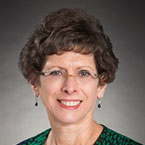By: Mary Jane S. Hogan, MD, MPH, FAAP & Melissa M. Hudson, MD, FAAP
Completing treatment for childhood cancer can bring a range of emotions. In addition to feeling of relief about no more chemotherapy, the child and family may worry that the cancer will return. Adjusting to a new routine with fewer visits to the doctor can also be stressful.
After cancer treatment is completed, your child will continue to be checked by a pediatric oncology doctor at regularly scheduled follow up visits. Here is what to expect during follow-up care, and some common questions families of childhood cancer survivors may have.
What happens at my child's follow-up visits after cancer treatment?
After the end of cancer treatment, follow-up visits typically include testing to make sure the cancer has not returned. In addition, persistent side effects from cancer treatment are monitored and supportive care given. As more time passes after therapy is completed, follow up visits increasingly focus on monitoring for and treating delayed effects of cancer treatment.
Different cancers require different treatments for cure. Both the type of cancer and its treatment often impact the long-term overall health of the cancer survivor and family. Long-term follow up health care after cancer treatment is highly recommended to monitor for these possible persistent and late onset health issues, so they can be treated accordingly. To help guide health care providers to provide appropriate care for each child, your child will need a cancer treatment summary and survivorship care plan.
What is a cancer treatment summary and survivorship care plan?
A treatment summary is a written, short story about the treatment a child received for cancer. It includes:
Type of cancer and date of diagnosis
Title of the treatment protocol used
Names and dates of surgery, medication doses and/or radiation therapy received
Reports of the tumor biopsy, special blood or tissue testing, and imaging results
Side effects or problems experienced
Supportive or palliative care received, such as counseling or physical therapy
Names and contact information of your child's cancer care team
A survivorship care plan is a written follow-up care plan just for your child which includes the treatment summary and the following:
When to test and how to care for possible long-term and late effects affecting the body
When and how to get emotional, social, and spiritual support or counseling if needed
When to test and how to get help for possible learning or school issues
Information for health insurance and other financial support if needed
Appointments with other special doctors, educators, and therapists if needed
Suggestions for healthy behaviors, nutrition (healthy food), and physical exercise
Will my child have any lingering side effects from their cancer treatments?
During the first year after completing cancer treatment, many side effects or problems that happened during treatment will go away or improve. A side effect that does not improve is called a long-term side effect. Some long-term side effects may take months or years to go away. Other side effects may not occur until months or even years after treatment. A side effect that develops months to years after completing cancer treatment is called a late effect.
Some effects are very mild while others cause noticeable health problems. Some children have many long-term or late effects, while others have none or few.
Different cancer treatments can result in different late effects of treatment for childhood cancer. Your child's survivorship care plan will list the possible long-term or late effects that they may face, and how your doctor may test for these issues.
Types of possible long-term and late effects
Depending on the cancer and cancer treatment possible problems may arise with:
Certain body parts such as the heart, lung, kidney, or gastrointestinal tract (throat, stomach, intestines, liver, pancreas)
Certain hormones that control growth, pubertal development, or energy
The nervous system causing pain, numbness, or tingling in the hands, feet, or other body parts
Sensory functions resulting in hearing loss, vision changes, dry eyes, or dry mouth
Recovery of the immune system making it hard to fight infection
New or second cancers
Emotions or feelings such as depression or anxiety
Behavior such as difficulty sleeping or difficulty interacting with friends or family
Memory, learning (handwriting, spelling, reading, math), or thinking (paying attention, doing work on time, solving problems, planning)
What can I do to help my child?
To avoid being overwhelmed by possible long-term or late effects, ask your child's doctor what to expect during your child's recovery from cancer treatment.
Knowing what possible symptoms to be aware of and when they may occur can help you care for your child.
Every year, bring your child's cancer treatment summary and survivorship care plan to their primary care doctor or survivorship clinic to help provide the best care for your child.
What is a childhood cancer survivorship clinic?
Two years after cancer treatment has ended, your child may be referred to a special childhood cancer survivorship clinic to be checked for any possible long-term and late effects from the treatment. If your hospital does not have such a clinic, ask your child's doctor to suggest one or find one at the Children's Oncology Group website, which has a Late Effects Directory of Services.
At this clinic, you will get a written copy of your child's cancer treatment summary and a survivorship care plan (see above) that tells doctors what possible problems to look for. These clinics combine the help of special doctors to watch for possible health problems that could continue or occur years after cancer treatment has ended. By finding and caring for these possible problems early, doctors can keep your child healthy.
More information
About Dr. Hogan Mary-Jane Staba Hogan, MD, MPH, FAAP, is an Associate Clinical Professor at Yale School of Medicine, Pediatric Hematology Oncology section. She contributes educational commentary about cancer and blood disorders as the American Academy of Pediatrics Section on Hematology and Ongology education committee chairperson, Benign Hematology and Cancer survivorship policy review committees, and for the editorial boards of AAP Grand Rounds, Pediatrics, and PREP Self Assessment publications. Mary-Jane Staba Hogan, MD, MPH, FAAP, is an Associate Clinical Professor at Yale School of Medicine, Pediatric Hematology Oncology section. She contributes educational commentary about cancer and blood disorders as the American Academy of Pediatrics Section on Hematology and Ongology education committee chairperson, Benign Hematology and Cancer survivorship policy review committees, and for the editorial boards of AAP Grand Rounds, Pediatrics, and PREP Self Assessment publications.
|
About Dr. Hudson Melissa M. Hudson, MD, FAAP is currently a Member and Director of the Cancer Survivorship Division in the Department of Oncology at St. Jude Children’s Research Hospital. Dr. Hudson serves as Co-Chair of the Children’s Oncology Group Long-Term Follow-Up Guidelines for Survivors of Childhood, Adolescent and Young Adult Cancer and Co-Chair of the International Late Effects of Childhood Cancer Guideline Harmonization Group. Melissa M. Hudson, MD, FAAP is currently a Member and Director of the Cancer Survivorship Division in the Department of Oncology at St. Jude Children’s Research Hospital. Dr. Hudson serves as Co-Chair of the Children’s Oncology Group Long-Term Follow-Up Guidelines for Survivors of Childhood, Adolescent and Young Adult Cancer and Co-Chair of the International Late Effects of Childhood Cancer Guideline Harmonization Group.
|